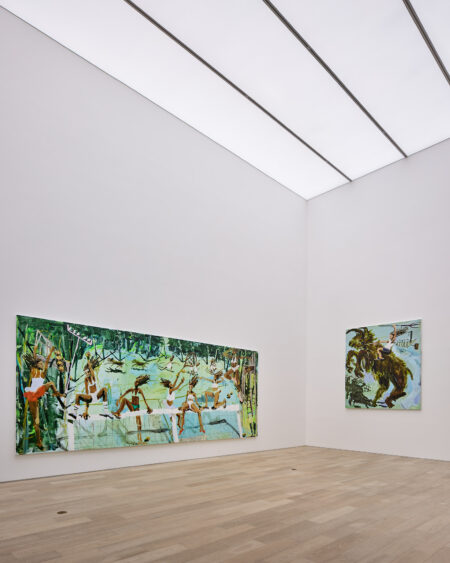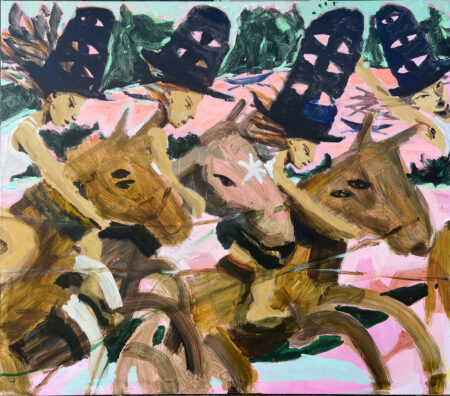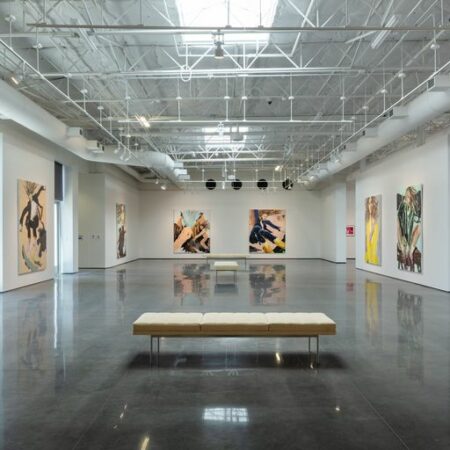KNUD SØRENSEN
Danish author living on Mors, which together with his native Vendsyssel forms the back- ground for his writing. His books include En Tid (1997) and En befrielse (1999). In 1965 he invited Sandemose to a reconciliation meeting at The Central Hotel in Nykøbing Mors.
THE TWIN BROTHERS AKSEL AND ESPEN
In the foreword to the 1955 edition of A Fugitive Crosses His Tracks, Aksel Sandemose explains his choice of the name Espen. He took the name from Oehlenschläger’s poem ‘De tvende Kirketårne’ (‘Two Steeples’) about the twin brothers Esbern and Aksel. From this one could draw the conclusion that he, Aksel, regards Espen as a twin brother. The name Espen – or a derivation of it – can also be found in Sandemose’s own family: His grandmother’s maiden name was Espersdatter (‘Esper’s Daughter’). Aksel and Espen may not be identical, but they are inseparable. In the postscript to A Fugitive Crosses His Tracks Sandemose writes: ‘People have asked me if I am Espen Arnakke. He and I are Dichtung und Wahrheit’, something that can also be seen as true of the towns Nykøbing and Jante, the topography of which is clearly modelled on Nykøbing. Its twin city Jante differs from its brother by having no fixed coordi- nates that can be marked on a map: It can exist in any society, anywhere on the globe.
Aksel Sandemose also raises the twin theme in an unpublished note from 1952, where he writes about a childhood leg injury:
I will probably never know the significance of the fact that since the age of 11 I have never moved my left foot without thinking about getting off lightly. From an early age I thought of Janus, because since I always rested on and lifted with my right foot, the left leg was naturally thinner. I also could not see with my left eye. The idea of dualism, division, splitting, two people, twins emerged very early.
That the twin brother Espen was given the surname Arnakke is also perfectly natural. Arnakke is a cliff on the east side of the island of Mors about four kilometres north of Ny- købing, a cliff that the former Geodesic Institute named Årnakke several decades ago, because they thought they had established that the local population pronounced the first letter of the name as ‘O’ (the Danish ‘Å’) rather than ‘A’.
But back to Arnakke. This cliff on the coast of the Limfjord was one of the favourite haunts of the young Axel (as he was originally called), and when the boy became a man dreaming writer’s dreams the place stayed with him.
In a diary entry from 1923 he remembers his childhood experience of Arnakke from when he was a ten-eleven year-old boy heading along the beach north of the town with his friends. He writes: “We came past Bjørndrup to Arnakke – I didn’t know what it was called then – and I was taken by the wild beauty of the steep, forested cliffs, going through valleys and over hills, and looking across the fjord lying far below.” Elsewhere he mentions sitting at Arnakke, writing in a cavernous ditch with the fir trees above him. He also worked on a fable about Aarnakke (using the local pronunciation for its spelling), a fable that despite being praised in draft form by the author Johannes V. Jensen, was never published. But from his notes we know that the fable describes “two men in ancient times coming towards each other below Aarnakke, where one of them is assassinated …”. This is probably the first time Sandemose imagined a murder taking place in one of his stories, but not until En sjømann går i land (‘A Sailor Goes Ashore’, 1931) was the idea realised in Espen’s murder of John Wakefield.
These twin brothers, of course, had the same schooling and the same experiences of the Jante mentality both Aksel and Espen later describe. They also had the same interests, especially in zoology. They were keen collectors and conducted experiments, but Espen stopped because his peers mocked him. In the chapter ‘The Zoologist’ in A Fugitive Crosses His Tracks, he claims that he would have become a zoologist if Jante had not blocked his path. And if that had not happened, he would never have come to Misery Harbor and would never have killed John Wakefield. The zoologist is the other dead man in his life, stabbed in the back when he was 14 years old because so many stood laughing behind his back that the ridicule killed him. He also writes about trying to rekindle his interest, but that it had grown cold.
Aksel, however, maintained his interest, something made clear in a letter to his colleague Knuth Becker on May 20th 1939. Sandemose was in a deep crisis. It was the year after he had made the journey with Espen depicted in the novel Brudulje, and he had isolated himself in a remote alpine hut. In the letter he writes:
I have touched neither typewriter nor pen since I wrote the above … but I have made life easier with a little illegal hunting, tree and felling experimenting with animals. I have a row of jars of larvae, and am currently most interested in the tadpoles that I give different nutrients, as well as transforming their size and appearance with chemicals. Iodine has a dramatic effect on their growth. In comparison, the ones that are not given iodine are nothing. Although more than three drops of iodine in a litre of water is apparently unsuccessful. Yester- day I found some that had hatched in a small hole where the water had almost disappeared. Now that they have fresh water in a large bowl they have (you can choose to believe it or not) grown to three times the size in 24 hours.
I am at one with the solitude, and have become what young, soulful poets call at one with nature.
The twin brothers use different imagery to describe their birthplace, but in the 1934 postscript to A Fugitive Crosses His Tracks Aksel expresses what can be seen as a kind of joint conclusion:
I wonder how many have loved their hometown and family as much as I. Because it must, after all, be best to have loved it so much – like a tiger. But they laughed at me, and my deep hatred became the negative measure of how deep my love had been.
This is a quote that can be compared with another in the chapter ‘Gensyn med Jante’ (‘Jante Revisted’) from Aksel’s Rejsen til Kjørkelvik. Dichtung und Warheit (1954):
Mors, Mors Island or Morsland is an island in the west Limfjord. It lies in the fjord between the landscape of Thy, Vendsyssel, Himmerland and Salling. The island is the entire peninsula of Jutland on a small scale. Anyone who spends a week on the island of Mors and investigates thoroughly has seen all of Jutland: Its forests, fertile fields, plains, hills, moors, lakes, bogs, sandy beaches and the low streams that can be seen from the peaks. I will quote a just witness, my wife Eva, who was with me and who after several visits to Denmark had a basis for comparison – and who furthermore regards things with no form of local patri- otism because she is a foreigner: Aksel, a more beautiful place than Mors can hardly be found in Denmark. Eva is right, and this beautiful Mors was mine a long time ago, with the starling, the stork and the lapwing, with its beaches and rushing clouds. But I did not thrive with the people there, and beautiful Mors can be a nightmare when the love between people dies.
This was not, however, the first time Aksel Sandemose described the place he and Espen came from. In an article he called a sketch, published in 1937 in Dagbladet under the title ‘Hellige stener’ (‘Holy Stones’), he starts by ironising about the fact that people should say something nice about where they come from at some point, so they have a document to refer to if they are accused of maligning it – something he had experienced after the publication of A Fugitive Crosses His Tracks.
Jante lies in a cove between two headlands. It curves inward like a lobster’s claw. The town lies innermost with factory chimneys like the eye stalks of the lobster.
It sounds ominous, and there is nothing more uplifting in the rest of his account. Childhood memories emerge as he walks around, but none of them fill him with joy. After describing his childhood home he writes:
When you walked away from the house you could see the end of the world. It was a small, yellow house that blocked the far end of a street. Nobody had said so, but the long street seemed to end there, and maybe there was nothing beyond?
That is, perhaps, how it should have been. His conclusion was:
I had come to see Jante, but I don’t think I really saw it. But it came anyway, on the ferry I left on the next day. Someone came up to me to ask if I was, who I was. I answered yes, because the man could have been one of my brothers or something. He started to tell me about literature, which apart from dried cod is the worst thing I know. He could say Brandes, Hamsun and Aakjær, but then he exhaled heavily and looked at me sheepishly for some time. Holberg! he said suddenly, and slapped me on the shoulder so I slumped.
I looked at him, and let him live. This was Aksel’s experience, but he also writes about Espen’s experience of Jante:
Jante lay in a small cove. The water was murky from the steamboats, the banks acidic swamps. The surplus cats from the town were drowned in the cove and washed up on the beach once the sacks had rotted. Here and there a crow prac- tised balancing on a corpse that had not yet washed ashore. The steam ferry came at set times, making the cat bellies lurch. There were many beautiful places outside the town. There was also fresh water in the fjord if you went further away. But it was this filthy cove that became the image of so much that Espen Arnakke experienced in Jante.
At one point in A Fugitive Crosses His Tracks Espen Arnakke tells about the corner of Larsen’s Store, where the boys of Jante gathered in the evening, told each other tall stories of their conquests, and sniggered at passersby. Years passed, he says, before he realised that the boys on the corner were fighting for the home their elders had not managed to build because they were raised in spiritual and temporal poverty.
He continues by recounting how he had often dreamt of coming alone along the street one stormy autumn night. The boys on the corner would just stand and stare and forget to blow their noses because here came the great and mighty Espen. And the great and mighty Espen would go up to them and say “what I hoped every night someone would come and say to us: Find a job you like, and find yourselves some girls you like and make all sins legal. You can take Petrus out into the forest and shoot him there, because he will never be happy. [Petrus was Espen’s domineering older brother in the novel].
This was a dream that never came true for Espen, but in a way it came true for his twin brother Aksel. In March 1965, five month before he died, he was invited to Nykøbing and in the grand hall of The Central Hotel he spoke to and was applauded by 600 of the town’s people.


